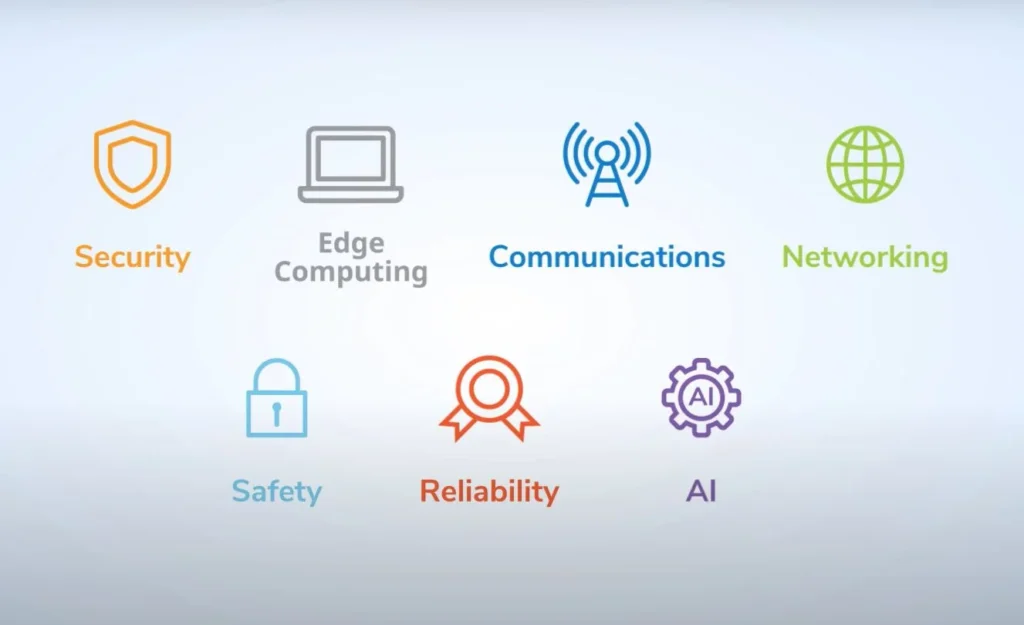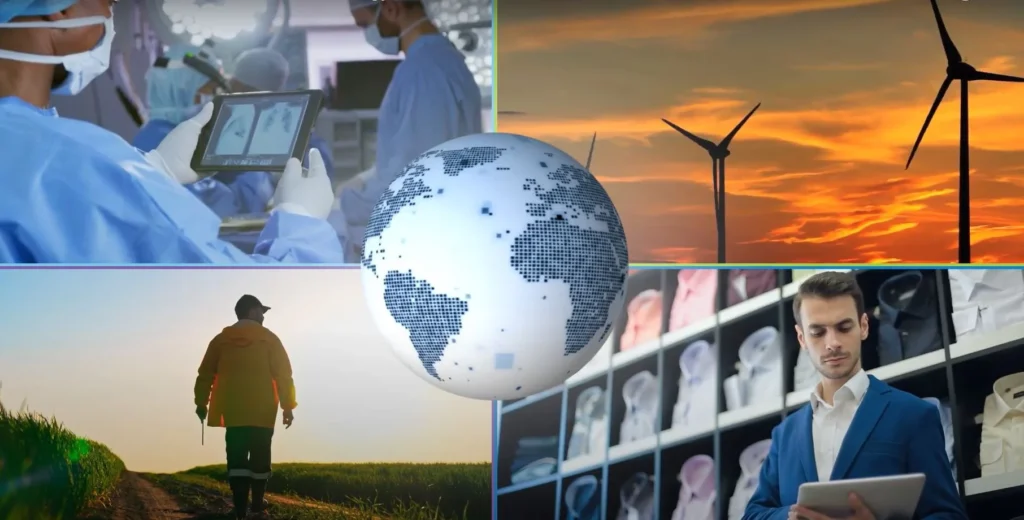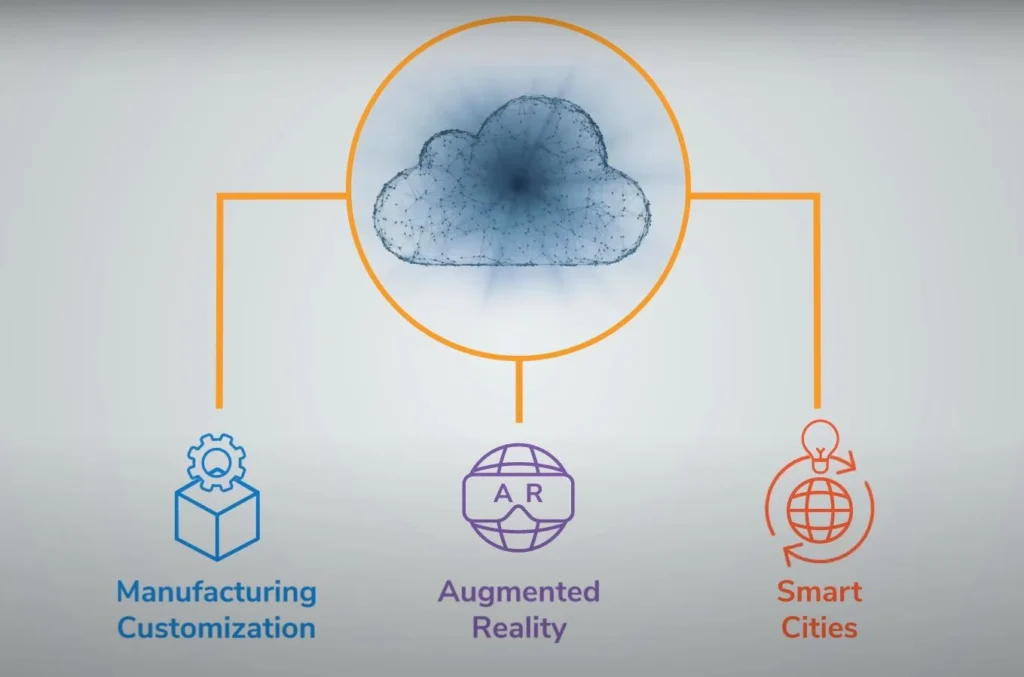The idea of a data network connecting devices is known as the Internet of Things. People and “things” can converse with one another within the Internet of Things.

The Internet of Things: What is it?
The Internet of Things, or IoT, is a system that links devices in a computer network and enables them to use software, applications, or technical devices to gather, process, analyze, and send data to other objects.
IoT devices operate on their own, but users can personalize them and grant access to data. Real-time Internet of Things (IoT) systems are made up of a network of smart devices connected by Wi-Fi, Bluetooth, other means of communication to a cloud platform and wireless communication technolgies like ZigBee and Thread.
What happens if there’s a burglary or the temperature turns out to be too high? The system can notify the user or initiate additional actions on its own, like activating the air conditioning or contacting the police.
The devices send data to the cloud after first gathering data, such as the user’s heart rate or the apartment’s temperature. It is processed by software there, and Big Data and the Internet of Things are closely related.
What makes up the Internet of Things?
For the Internet of Things to function, analytics, connections, devices, and experiences are just as crucial as big data. This idea can be summarized as follows for ease of understanding: Analytics, BigData, Connection, Devices and Experience.
- An essential component of the Internet of Things, analytics connects the devices and the data they produce while streamlining business operations;
- BigData is cloud-stored information gathered from devices. They enable you to create new processes or automate ones that already exist;
- Connection: these are the avenues via which information is sent and received by devices;
- Devices: those linked to the system that, depending on the task at hand, require a certain message frequency in order to function properly;
- Experience: utilizing, evaluating, and reconsidering past IoT-based customer problem-solving experiences.
What applications does the Internet of Things have?
Businesses can lower labor costs and automate processes thanks to IoT. This lowers waste, enhances services, and lowers the cost of manufacturing and shipping.
In 2020, the industries with the greatest IoT technology penetration were energy, retail, city life management, healthcare, and transportation, per a study by IoT Analytics.

- Through remote monitoring, the Internet of Things enhances the controllability of transmission lines and substations in the power industry.
- IoT opens up new possibilities for disease diagnosis in healthcare since smart devices can keep an eye on patient health metrics in the background.
- In the field of agriculture, intelligent farms and greenhouses automatically water and fertilize, and intelligent animal trackers provide farmers with real-time information about the whereabouts of their animals as well as their health status by monitoring body temperature, heart rate, and overall activity.
- Telematics and smart fleet management, which connect a car to a local operating system for monitoring and diagnostics, are common IoT-enabled solutions in the transportation space. According to Statista, by 2025, $740 billion will be spent on IoT development for cars.
- IoT solutions are assisting in the automation of lighting in urban environments, resulting in up to 30–50% cost savings. The need for city dwellers to reconcile and send energy consumption data themselves is eliminated by “smart” meters, which self-record and transmit information on costs and wear and tear to management companies.
- IoT lowers freight costs and lessens the effects of human error in logistics. IoT systems can also keep an eye on how full garbage cans are and use that information to optimize garbage collection expenses.
- The mining and oil and gas sectors are leading the way in IoT adoption. Specifically, the oil and gas industry benefits from increased production at already depleted fields through the application of deep analytics during the well-drilling process.
- IoT in retail allows brands and retailers to track customer interactions, manage inventory, optimize costs, and enhance the customer experience through smart vending machines and digital signage. ResearchAndMarkets projects that the market will increase from $14.5 billion in 2020 to $35.5 billion by 2025.
In what ways does the Internet of Things benefit people?
The smart home and the Internet of Things are frequently linked. With the help of gadgets and technology created by Google, Amazon, Apple, and other companies, people can use voice commands to activate virtual assistants to turn on lights, play music, adjust room temperature, and make online purchases.

You can simply press a button on your smartphone to have your smart home take care of everything, eliminating the worry that you forgot to turn off the faucet or the iron. Alternatively, you won’t need to press a button because the intelligent house will arrange everything and notify the owner of the outcome. Everybody who passes by your apartment will be identified by the surveillance system using computer vision, and the photos will be compared to the police database.
Additionally, any house can be made “smarter” with a system from the American company Qualcomm. It helps you to give commands to the robot vacuum cleaner and other connected devices, open doors using facial recognition, and remotely monitor the state of affairs in the house. It also reports any noises that occur.
Does the Internet of Things have any drawbacks?
Security is the primary issue that the Internet of Things’ development is linked to. Cybercriminals are always attempting to break into databases containing personal health information, intelligent car control systems, remote patient monitoring devices, launch phishing attacks, upload viruses to compromised devices, and even carry out complete acts of sabotage at manufacturing facilities. IoT marketers must thus learn how to safeguard their systems.
The potential for software from various devices made by different manufacturers to be incompatible when combined into a single system adds another layer of complexity to the Internet of Things. When software updates are released for a device without first verifying that the updated version is compatible with older software versions on other linked devices, this kind of scenario may occur. For the whole IoT system to function properly, other development companies will need to be contacted for troubleshooting and asked to modify their software.
There will undoubtedly be job losses as more and more devices are connected to the internet. For instance, some of the experts in equipment installation, maintenance, and repair will be replaced by IoT systems. Furthermore, there is currently some ambiguity surrounding the legal aspects of implementing the Internet of Things.
The Internet of Things’ future
According to IDC, there will be 55.7 billion connected devices globally by 2025. They will remain targets for cybercriminals because infecting an IoT system with malware can happen quickly enough. To save time and money, smart technology will be increasingly adopted by regular users, companies, and entire cities. For instance, traffic lights with integrated video sensors will modify traffic based on traffic, and refrigerators will be able to alert users when food is about to spoil.
Currently, though, the absence of uniform standards is the main obstacle to IoT deployment. As a result, new solutions emerge more slowly than they could and current ones are challenging to combine with one another. Another nuance is that “things” in the Internet of Things ought to be self-sufficient, meaning they ought to be able to draw energy from the surroundings on their own without assistance from people.